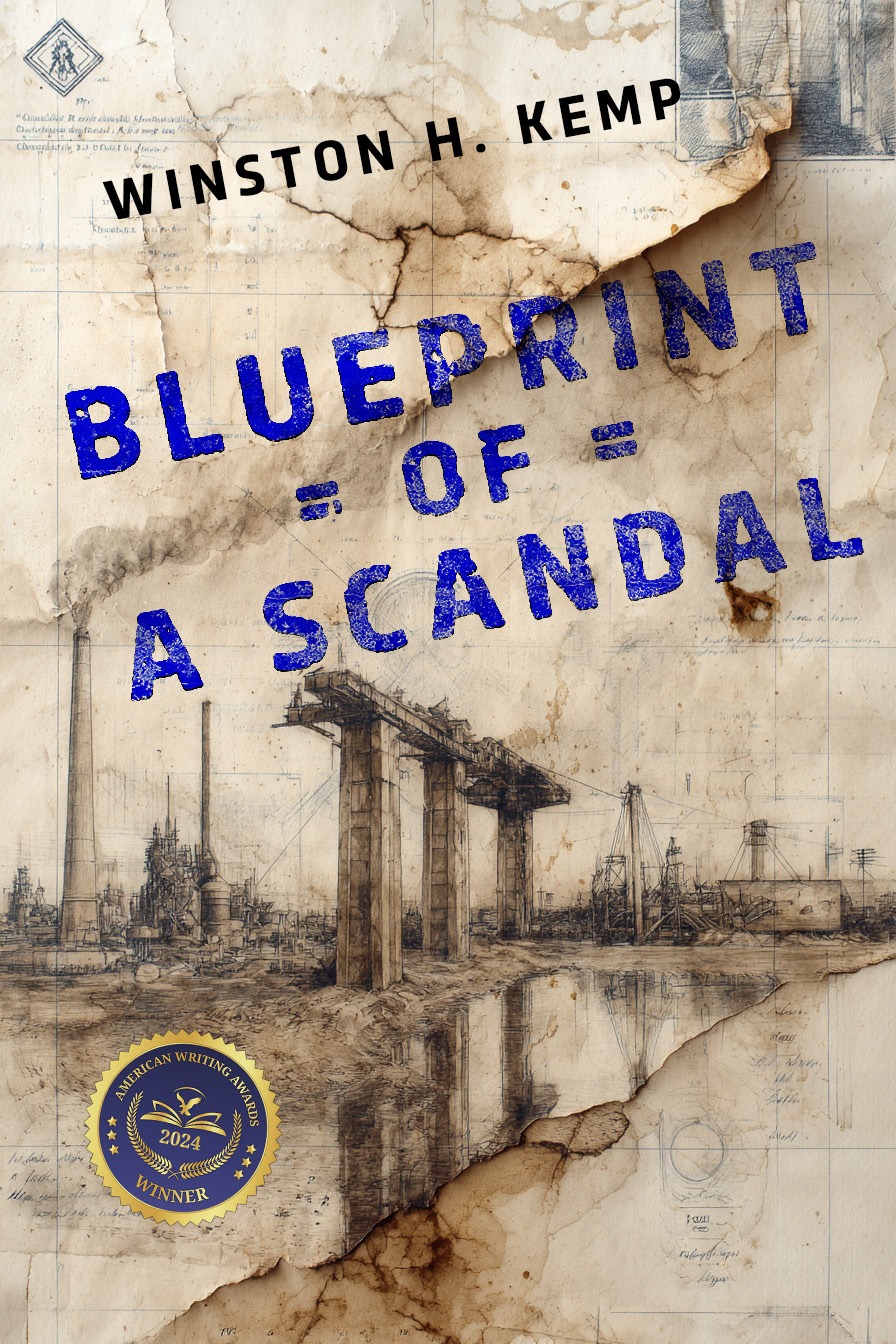What surprised me most was the character work inside a work of reportage. Nita Bhattacharya's methodical care, Rosie Delgado's blunt mercy, and Harold "Red" Klement's late-breaking conscience form a triangle of contrast that sharpens the book's ethics. Their conversations never feel staged, and their doubts and loyalties keep the investigation from flattening into exposé. They're the reason the final pattern hits so hard.
From award-winning investigative reporter Winston H. Kemp comes a ruthless anatomy of civic rot and criminal ingenuity in the Great Lakes basin—a bristling investigation into how lines on paper became instruments of violence, and how a city taught itself not to notice. In the postindustrial sprawl west of Lake Erie—where slag hills rim the horizon and the wind smells faintly of solvents—Kemp traces a lattice of bribes, cut corners, and convenient deaths back to the desks where public works were sketched and signed.
Kemp grew up in Harbor City, a river-port wedged between shuttered paint works and a coke battery that smoldered all winter. As a young intern for the Bureau of Building Safety in the late 1990s, he handled coffee-stained plans for the Edgewater Viaduct, the Midtown Transit Hub, and a chain of emergency stair retrofits at Lorain Towers. Two decades later, when a scrap hauler turned up with a box of "as-builts" rescued from a flooded Quonset hut on Industrial Avenue, he recognized a handwriting tic and a mason's square symbol he'd seen before, tucked in the margins like a dare.
Blueprint of a Scandal reconstructs the long con that grew out of that symbol: a quiet fraternity linking permitting clerks, city engineers, and private consultants to three dominant contractors—Peregrine Construction, Stone & Rail Partners, and the O'Hara Inspection Group. A crane boom that folded in 2001 at the Midtown site; a stairwell that sheared off in 2004; a missing surveyor whose transit was found in a cattail ditch by the Ironwater Canal; a fire in a salt warehouse that burned too clean. Each episode filed away as misfortune, each payout logged as a change order. As Kemp overlays accident reports with soil maps, bid tabulations, and meeting minutes, an ugly pattern emerges: engineered weak points, concrete mixes quietly swapped for cheaper, porous aggregates, and inspections pre-cleared before pours.
The book ranges from council chambers on Lorain Avenue to the back booths of Pelican Eddie's, from a retired metallurgist's garage full of core samples to the tunnel under the viaduct where a whistleblower once kept a roll of originals. Kemp's sources—archivist Nita Bhattacharya, union steward Rosie Delgado, and Harold "Red" Klement, a guilt-struck city reviewer—guide him through a labyrinth of FOIA fights, grand jury feints, and one spectacularly botched procurement reform. Threaded through is a parallel environmental history: slag heaps, benzene plumes, lead dust settling on porches, and the slow corrosion of civic attention that made sabotage indistinguishable from neglect.
Part procedural, part civic elegy, Blueprint of a Scandal burrows into the gray zone where construction ends and consequence begins—charting a hidden economy of kickbacks and collapses and the paper trail that should have saved a city from itself.
